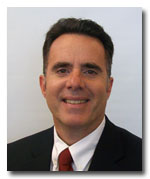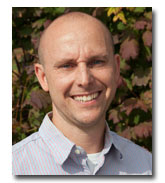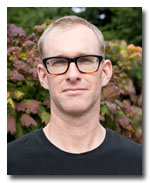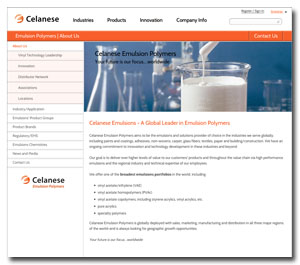Along the textile supply chain, there are always some misunderstandings, as not all parties among
the market participants speak the same language. In contradiction to this is the spinning sector:
here, Uster Technologies Ltd., Switzerland, succeeded over decades of work in seeing that the
global yarn production industry speaks the same language. Factors in this success are Uster
instruments as well as the Uster® Statistics.
Uster Statistics
For decades, the Uster Statistics have set the quality parameters for production from raw
fiber through yarn. They cover all preparation and spinning steps for cotton, other cellulosics,
polyester, polyamide, polyacrylic and blends; as well as the main spinning systems including carded
and combed ring, carded open-end and air-jet.
The Uster Statistics manual consists of several sections, organized according to spinning
system and raw material composition or yarn style, with each section listing specific quality
attributes. A measurement may include several individual parameters.
How It All Began
How did it happen that a single company has been able to implement this standard in the
global market? The answers were given to the Rupp Report in an exclusive interview with Thomas
Nasiou, head of Textile Technology, and Richard Furter, emeritus head of Textile Technology, Uster
Technologies.
RR: The Uster Statistics are known worldwide. In how many countries have they been
sold?
Furter: In virtually all countries where the Uster instruments are already in use
– especially in spinning mills worldwide, but also in universities, to teach the students how to
qualify a spinning mill.
RR: How many users are there in the different regions of the world?
Nasiou: There are 750 customers in 47 countries. They are virtually all spinning
mills that have an importance to the global or, at least, the regional markets.
The Origin Of The Statistics
RR: How and when did the story of the Uster Statistics start?
Furter: It was basically the effect of major problems in the spinning mills, where
the users of the already existing Uster instruments were facing problems. The inventor of the Uster
evenness tester came and said that the customers were not able to read the evenness diagrams
properly. Another reason was the CV coefficient. That was the start in the industry to know that
benchmarks in production are something important.
RR: And what happened next?
Furter: That was the impetus and the start for the story of the Uster Statistics,
which were eventually established and created. That was in 1949 with a single page. In 1957, the
first Uster Statistics were published in the German magazine “Melliand.”
RR: Was it difficult to convince the industry of the benefits? How did the idea
catch on in the markets?
Furter: Well, it was extremely difficult to convince the spinners. We knew it
needed a common language, but that was a very long process. However, with this tool, the spinners
could convince their customers with comparable data for their yarns. And as the idea was once
established in the market, and the obvious benefits, too, it became easy and a fast self-runner.
Collecting Market And Product Intelligence
RR: How do you compile the Uster Statistics? Who delivers the inputs?
Furter: We get data from 47 countries. We want to examine all possible fiber
materials. There are more than 6,500 samples collected around the world. All Chinese samples are
collected in Suzhou; and in Uster, the samples from the rest of the world. Then more than 2,200
graphics and diagrams are produced. The result is an impressive work of around 2.5 kilograms. The
current issue is that of 2007, because it takes about five years for a new issue to be ready for
production.
RR: And when can the industry expect a new edition?
Nasiou: We want to publish a new edition every five to six years. We simply need
this time in order to collect the material and also to produce the differences and the resulting
data.
RR: Will the next issue be any different?
Furter: Yes, that is a part of the further development. The scope of the coverage
will be extended; there are new fibers and new blends. Then we want to add a new parameter: the
hairiness length classification (S3). This is a new set of parameters, relating to Classimat
developments. Then both results of the Classimat are incorporated.
RR: Is there any need for a company to fulfill certain requirements in order to
work with the Uster Statistics?
Nasiou: No, not really. We just specify the minimum requirements. The invited
customer then gets his samples back with the test results. There are benchmarks for 40 yarn
qualities, so it needs more and more participants. But of course, we have to do a certain
preselection.
RR: What are the requirements for a spinning mill to get the data of the Uster
Statistics?
Nasiou: He should contact our website and request the online tool or the CD, which
is free of charge. There are all 2,200 graphics on the CD; he can also tell us his specific targets
to achieve.
Global Tool
After reviewing the data about his yarn quality, the spinner can see where improvements can
be made and new targets can be set in terms of his yarn quality. With this, he has achieved the
most important goal: Uster Statistics can help to produce an overall consistent yarn quality. And
as mentioned, there are no costs for the spinner at all.
Today, the whole world is working with the Uster Statistics. To avoid having any delivery
sent back due to second quality, the yarn quality must be top. Nobody wants to lose money from
returned consignments. The Uster Statistics can help to save money if the statistics are
interpreted correctly.
RR: And that was the worldwide breakthrough?
Furter: Yes, today, quality is a prerequisite for successful spinning, and the
global market also helped to convince the spinning world about the value of the statistics.
RR: How was this done in the era of slide rules and without computers?
Furter: Oh, that was a big effort to do. Today, of course, we need a lot less
staff. Above all, it requires the right software engineers to develop the right processes.
RR: Were the spinners the first industry that was interested in the Uster
Statistics?
Nasiou: Yes, but really, it is of paramount importance that all stages of the process know
what is going on upstream and downstream.
Economic Advantages
RR: Do you have historic data from the past? What is the benefit of working with
the statistics? Is it even possible to quantify all that?
Furter: Well, productivity drives the business. With the Uster Statistics, one can
test his real and true productivity. And, as mentioned above, it can set new targets. The Uster
Statistics show many answers to a lot of possible questions. They are widely used as a basis for
yarn contracts and product specifications in buying and selling. With this tool, one can sell
quality and not just wishful thinking.
RR: And how about the textile machinery industry?
Nasiou: Well, leading textile machinery and accessory manufacturers depend on
Uster Statistics too to evaluate the quality impact of new developments in machine technology,
monitoring or control systems.
RR: Are the Uster Statistics now standard in all areas of the textile
industry?
Nasiou: This is what we assume. It thus has a matrix to produce exactly the
quality that the user wants to get. It’s in many areas like this: Today, for each activity, you
need certain tools and structures, according to which one can work, because some of the knowledge
has already been lost.
RR: How about the retailers? Can they benefit too from the data?
Furter: Yes, of course. There are also enormous benefits for retailers. For
example, the Uster Statistics are the basis for clearly-defined yarn quality profiles. The
retailers can specify exactly what is needed to ensure the requested consistent quality of the
end-product.
RR: In conclusion, one could say that the creation of the Uster Statistics is an
enormous task. How do you get all this done?
Furter and Nasiou: Well, it takes a very large number of people to bring it all
together to a common level. It is unique and tremendous teamwork for all internal and external
people.
RR: And are we to suppose that the results are only possible if you use the Uster
instruments?
Nasiou: Yes. It needs consistent and compatible tools and systems, which lead to
meaningful and comparable results. It is clear; all market participants must speak the same
language, so that everybody understands all results in the same language.
What a dream for the other sectors of the textile industry!
November 20, 2012











